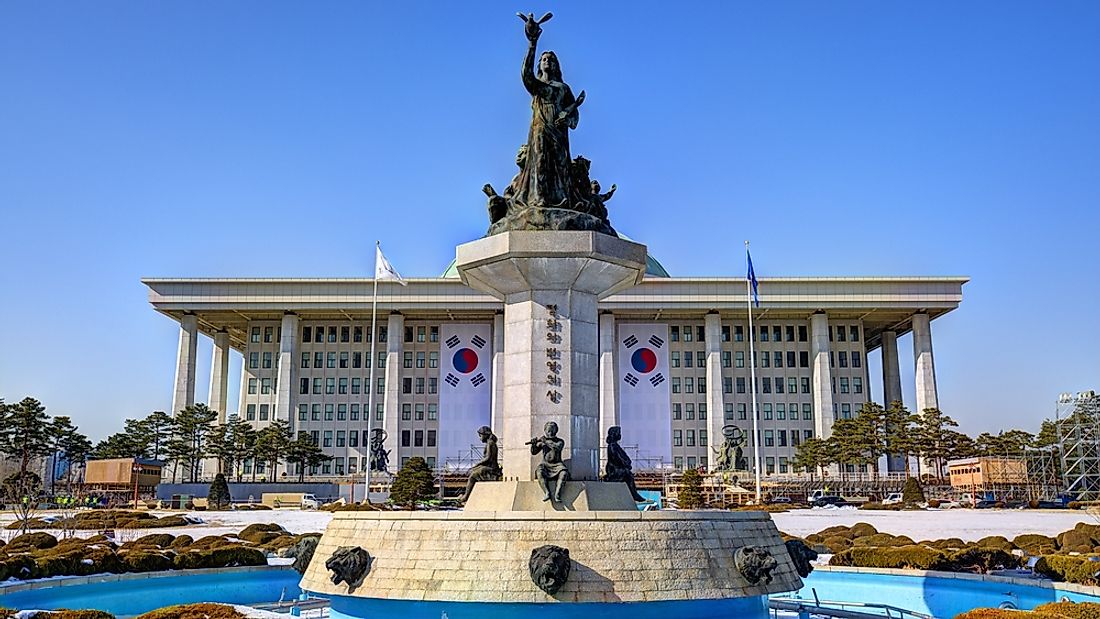What Type Of Government Does South Korea Have?

The Republic of Korea is a democratic republic with three principal branches of government: the executive, the legislative, and the judiciary. South Korea has a centralized government that primarily operates at the national level. The head of the government is the president. The highest member of the national assembly is the president, followed by the prime minister and then the ministers. The judiciary and executive branches operate majorly at the national level. The constitution determines the structure of the government.
The Executive Branch Of The Government
The president is the head of the executive branch of the national assembly. He or she is directly elected by the people and serves for a term of five years. After the term, he or she is not legible for a second term in service. He or she is the only elected member of the executive. They have the power to declare a state of emergency or war as long as the national assembly approves it. They are the Head of state and the national assembly and also the Commander-In-Chief of the armed forces of South Korea. Members of the executive are liable for impeachment by the national assembly in case of misconduct of the office. It consists of various ministries and independent government agencies.
Ministries Of South Korea
South Korea has seventeen ministers who are appointed by the president. The prime minister heads the departments, and all the ministers report directly to him. The ministries have affiliate ministries which report to the prime minister and the minister in charge.
Independent Agencies
The executive also comprises of independent agencies. Some of the agencies report to the president as some report to the prime minister. The representatives of these ministries can assume the position of the president apart from the prime minister.
The Legislative Branch Of The Government
The legislature is made up of the national assembly which has a total of 300 members. 244 members are elected from the various constituencies and 56 through proportional representation. The members of the national assembly serve for a term of four years and by-elections are held should a member be unable to serve the full term. Its primary functions are to pass and amend laws of the country, to audit the national budget and procedures of administration, to ratify treaties and to approve state appointments. It has the mandate to impeach high officials. It has a committee of seventeen members who must first deliberate on complicated policy matters and bills before they reach the floor.
The Judiciary Of South Korea
The judiciary branch is made up of the supreme courts, and other tribunals distributed all over the country. The president appoints the chief justice upon consent of the national assembly. The other judges are appointed by the president but upon the suggestion of the chief justice. The judges are liable to serve for a term of six years. All the judges must pass through a two-year legal training in the Judicial and Training Institute. The Supreme Court heads the judiciary and is the final court of appeal according to the Korean law. The constitutional court only deals with matters concerning the constitution review and impeachments.
South Korea is a multi-party state. Elections take place every five years to elect the President and the members of the national assembly. The National Election Commission oversees the elections. It has local governments that are granted autonomy and have their executive and legislative branches. However, autonomy does not extend to the judiciary and the independent agencies. The three branches of the government operate under the system of balance and checks in a way that each branch's operation is checked by the members of the other branches.











